It warmed my heart when a reader commented on Facebook that her “miss 10” enjoyed my interview with my friend Jo on ‘A Quirky Journey’. It was also very exciting when another reader mentioned that she can’t wait to make my pumpkin pancakes and GAPS muffins for her little ones. This is why I started blogging in the first place.
I wanted a platform to help champion that healthy living is fun and absolutely worth it! A big thank you to all of you that take the time to read my ramblings and an even bigger thank you to those who leave comments on posts, Facebook and Instagram.
Today I share tips and recipes to help to nourish the fussy eaters. In a society where we are heavily conditioned and manipulated by marketing, it can be difficult to know what is nourishing and what is inflammatory. Advertising can seduce even the wisest of minds.
When you combine conflicting nutritional advice with childhood phases of picky eating, it seems no wonder that many give in to the temptation and convenience of packaged, processed and takeaway foods. Let’s get creative and use basic foods to create spectacular meals. Humble is the new black!
Breakfast
As a kid mum would make me rice porridge for breakfast and serve a cup of warm full cream milk on the side. It was a completely gluten, soy and sugar free meal and I happily gobbled it up every morning.
After about the age of 7, mum figured that I was too old for ‘baby-food’ (she used the baby rice meal) and instead of just switching to actual rice she decided to try me on other cereals (I hated all of them – even the early sugary ones didn’t do it for me).
She tried making oat porridge but my memory of that was half-cooked oats in way too much milk with white sugar on top – yuck.
Thankfully at the age of 11 I learned how to cook my own creamy oats and became a porridge addict. However this still left four years where I hated all breakfasts short of english muffins with butter, plain croissants and homemade pancakes with butter and sugar (and the very guilty pleasure of nutella and butter on white toast – the cringes are real).
I wish I’d known at that age (or at least that my parents had known) how to make a creamy porridge out of buckwheat, organic full cream milk and Medjool dates, or muffins, bread and pancakes without grains or flours. Below are some recipes that go down a treat at breakfast (or any time of the day really), are free of most allergens (or can be modified further to suit your family’s needs) and are quick and easy to prepare.
A homemade ‘buck-weet-bix’ – between the ages of 12 and 15 I was an absolute sucker for crushed weetbix with hot milk, stirred together until the weetbix had absorbed some of the milk and it was a thick, creamy porridge consistency, I’d then add some brown sugar and stir it through – so bad (for my gut) but so good (for my taste buds)! I came up with this recipe last year; a decent and far more nourishing replacement. It’s easy to prepare and only takes a few minutes to cook on the stove top
Banana Mug-cake or Pancakes – this batter is delicious cooked in a little coconut oil or ghee in a frying pan for quick pancakes or poured into a large mug or bowl and baked for a breakfast ‘cake’ (which is divine served with homemade yoghurt, sour cream or coconut yoghurt)
Pumpkin Pancakes – As long as the batter is made the night before, this recipe takes mere minutes to have on the kid’s (or big kid’s) plates. It doesn’t really need any toppings as the vanilla and cinnamon combine with the sweet pumpkin to give a delicious flavor that is enhanced by the rich butter or coconut oil that you cook them in.
Make up a loaf of this bread or this bread at the start of the week and store in the fridge, then all you have to do is add your desired toppings. I even love this bread plain, because there’s already quite a bit of flavour from the tasty butter and coconut oil, delicious nuts and creamy eggs.
Avocado Pudding with Sliced Banana Coins – this is the quickest and easiest breakfast to prepare; simply mash a whole avocado with as much organic cinnamon as you’d like and slice a ripe banana into coins to serve on top. I find this combo so gentle on the tummy – it’s the perfect mix of sweet, fresh and creamy. In a pinch forget the cinnamon and mashing – just combine sliced banana with avocado chunks and you’re good to go.
Any of the lunch or dinner ideas below are also great breakfast options -I’ll admit, my breakfasts, lunches and dinners are interchangeable. It just depends on whether you can stomach the idea of soup or the likes for breakfast. As a teenager, I’d eat leftover chicken soup for breakfast all the time – it’s ALWAYS a good time for chicken and veggie soup!
Lunch
Lunch can also be a challenge for fussy eaters – especially if they’re out and need transportable food.
As a kid I loved eating lunch at home because I could have leftover meatballs heated up with some carrot sticks and lettuce or warmed-up leftovers or mum’s gluten-free pumpkin scones warm with butter, but I struggled to come up with lunchbox ideas (when you don’t like sandwiches, kiddy processed foods or fresh fruit and aren’t allowed to take nuts to school your options are limited).
I loved healthy food; curry with rice, chicken and salad, meatball wraps, roasted spuds etc. Sadly, mum and I never thought of just packing these things cold on a daily basis.
Mum would try to make the the “normal” options, such as white bread, ham and and processed cheese sandwiches which I absolutely despised.
I would’ve eaten meatball wraps every, single day if she’d packed them for me. Same with snacks. I would’ve been happy with chopped apple slices, sultanas and vegetables most days, but mum didn’t want me having the same thing all the time, so I ended up getting way too many chocolates, chips and biscuits in there for “variety”.
Lunch will look different depending on whether it’s a lunchbox-friendly meal or stay-at-home meal. Although you can pack soup or stew in a thermos or even a smoothie, if we’re being honest, what kid wants to lug around all these different containers when they’ve got their books and stationary to worry about?
At Home
Soup – It’s easy to make a big pot of soup and keep it in the fridge, or at least, to have a pot of homemade broth on hand and a range of veggies that you can simmer and blend to create a different soup each day.
My faves are pumpkin and cauliflower.
A simple chicken and veg soup is beautiful and can be livened up with some lemon juice, fish sauce, honey, ginger, garlic and coconut cream for fresh asian flavours. Bulk soups out further by serving with a slice of organic sourdough ancient grain bread, homemade gluten free bread or a savoury muffin spread with avocado or just plain and ready to dip.
Chicken or Turkey Jelly with mashed avocado and chives – my goodness this stuff is delicious and so much fun.
You know how if you cook a whole bird (chicken, turkey, duck etc) in a pot or an oven bag, you’re left with a whole lot of juices afterwards?
Pour the juices into a bowl and allow to set in the fridge.
Scoop the lard off the top and reserve to use later for frying or in baking.
You then have rich and tasty meat jelly, that wobbles and has the same palatable texture of the fruity dessert variety. Mash a whole avocado (or half if the avocado is particularly huge) with some freshly chopped chives and serve on top of the jelly mixture. This is so tasty and nutritious.
Leftover meat warmed in broth and served with steamed veggies, herb salt and olive oil or butter – simple but really tasty and simple to prepare. Some of my faves include oxtail with broccoli, chicken thighs simmered with sweet carrots and kale or lamb shank meat cooked in it’s own broth with sweet orange veggies and greens, served on cauliflower mash
All of the breakfast options (above) can be enjoyed at lunch and all of the lunch and dinner options can be enjoyed at breakfast. You could even combine some of the suggestions; a cup of cauliflower soup with pumpkin pancakes on the side, or pumpkin soup to begin with and a banana and avocado bowl for dessert. Be as imaginative as you like and please feel free to post your results on the Facebook page.
At School/Work/On-the-go
Roast Veggies with Avocado – I know, I know, I seem to use avocado in everything. It’s just so nourishing and tasty!
The beauty of roasting is that no matter what veggie you use, the results are always delightful.
Pumpkin is my favourite roast veggie because it goes really caramelised and sweet, but you can go to town and try carrot, zucchini, broccoli, cauliflower, beetroot etc. and if you are okay with starches, sweet spud (not just orange-fleshed varieties but white and purple sweet spuds too) or regular spuds.
It’s easy to roast up a few trays of veggies and then have them sitting in the fridge ready to use throughout the week. You can add some left over roast meat, meatloaf, hard boiled eggs or fish (sashimi or lightly baked salmon) for protein, and baby spinach or other salad greens; snow peas, lettuce, rocket etc. for a well-rounded salad.
A GAPS muffin and an avocado – so quick and easy. Make up a batch of muffins on the weekend and store in the fridge. The avocado can be enjoyed by itself or spread on the muffin.
Add a container with 1/4 cup sauerkraut stirred through cauliflower mash or homemade sour cream (or unsweetened greek yoghurt) to get probiotics in and you’ve got a super-nutritious lunchbox.
Just note that if your child’s school doesn’t allow nuts you’ll need to make the muffins with a cup of seeds (such as sunflower, pumpkin etc.) or save the muffins as a ‘home’ food
Omelette ‘wrap’ – a normal omelette used in place of a regular flour tortilla. Fill with whatever you have; leftover dinner such as sliced up meatloaf or meat balls, roast veggies, guacamole etc. or be adventurous and try a sweet version with banana, cinnamon and nut butter.
Alternatively, make banana pancakes really thin and use as a wrap, filled with cinnamon and nut butter for a sweet treat – keep in mind that many schools are nut-free. You might need to use seed butter or tahini instead.
Frogs on logs – Again, it depends on whether nuts are allowed, but if they are (or just use a seed butter instead) try spreading a thick amount of nut butter in the hollow cavity of long celery pieces and top with blueberries and/or chopped medjool dates (or just use blueberries and serve a few dates on the side as ‘toads’ – see below). This is a fun treat and even at 16 I was still getting excited about the presentation style of this snack
If you like rice try a gut healing rice bowl – the juices from a roasted bird (chicken, turkey, duck etc.) stirred through some steamed brown or jasmine rice (or any other type of rice – these two are my personal faves) and left in the fridge to set. Transfer to a container and add some of the meat from the same roast the juices came from, and (of course) add some avocado and/or leftover roasted vegetables.
The fats, protein and gelatine in this meal nourish whilst the soft grains of rice are comforting and appealing for fussy eaters.
Sweet spud mash filled nori-rolls with guacamole and raw veggies. I tried this a few years ago as an alternative to my normal quinoa and guacamole sushi rolls and they epic. The mash can be replaced with cooked and cooled rice and raw veggies can be replaced with fermented ones such as sauerkraut for a salty tang and probiotic goodness.
Berries (or fruit of choice) with yoghurt (homemade or coconut) and nut butter or tahini – probably one of the easiest meals to whip together when you’re short on time
Dinner
The trick with dinner is to keep things as simple as possible; meat or fish and veggies … that’s it (plus some nourishing fats to assist with vitamin absorption and fill up hungry tummies).
Sure every so often it can be fun to experiment with a new recipe or an alternative to old favourites, but for the most part, I find that less (ingredients) is best. Have a rotation of several well-loved protein components and a rotation of several well-received vegetable side dishes and have fun mixing and matching. Some nutritious examples …..
Proteins
The connective tissue and bone marrow from marrow bones. I totally understand if this sounds too foreign. If you’d told me three years ago that I was going to be eating the fatty tissue from around the joints of a cow – and actually enjoying it – I would’ve laughed.
Keep in mind that fussy eaters often hate the “chewiness” of meat. Both marrow and gelatinous tissue are super soft and have a gentle flavour. So if you serve it without making a huge deal, it might just be well-received.
Roast meat; a juicy chicken, melt-in-the-mouth lamb etc.
Slow cooked ox tail (seriously one of the most underrated meats)
Lamb chops (slow cooked is my fave – fall off the bone style)
Fish – grilled, baked, coated in some rice or banana flour and pan fried in coconut oil or ghee. This fish dish is particularly amazeballs.
Organic chicken legs cooked in broth or baked in the oven
Organic chicken thighs (baked, roasted, slow-cooked or diced and pan-fried in butter, coconut oil, ghee, tallow or lard)
Good quality (grass fed and/or organic) mince meat made into patties or balls (add grated veggies and whatever herbs you like) and bake or fry in coconut oil, ghee, butter, tallow or lard. As a kid my fave mince was turkey or pork and veal – yum. Mum’s special meatball recipe had onion, ginger, garlic, tamari sauce and sugar (I’d suggest rapadura sugar or coconut sugar). They were epic but so simple.
Veggies
Steamed Veggies (coated in olive oil and seasoned with herb salt)
Roasted Veggies (roasted in coconut, olive or macadamia oil)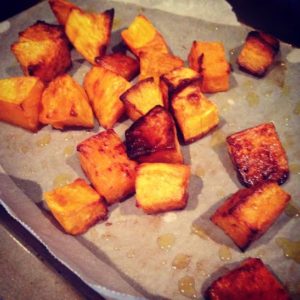
A salad (your favourite raw greens combined with other favourite veggies/ferments/avocado/lime/mango/apple/pear/berries/watermelon/roast veggies/goats or sheep’s cheese/cherry tomato/nuts/seeds
Fermented veggies i.e. sauerkraut, kimchi
Bowl of soup – (perfect for popping meatballs or meat off the bone in) or serving with a muffin on the side (or a spelt bread toasted sandwich with organic cheese and grated carrot – my personal fave as a teenager)
Snacks and Sweets
We all love a treat and there’s many ways to make them from whole food ingredients. Growing up, treats were seen as a rewards, something you had on the weekend or after playing sport.
Despite gluten and sugar never really agreeing with me, my love of chocolate and mum’s homemade cakes would win out every time, and I’d just deal with the side effects later on.
When I was in primary school I wasn’t analytical enough to question things. What 8 year old – especially back in 2004 when there was limited research published on both gluten and the chemicals they spray on GMOs – knows better unless their parents do? Below are some of my favourite whole food treats that are free of gluten, poor-quality dairy, refined sugar, all other nasties and take mere minutes to prepare.
Chocolate Mug Cake (NO MICROWAVE REQUIRED) – This delicious treat is rich, fluffy and moist and can be cooking in the oven while you’re eating dinner. If you’re in a particularly organised mood you can make them in advance, chill overnight and serve for breakfast the next morning with yoghurt (this cake is amazing cold – thick and fudgy)
Halva Balls (I got this idea from nutritionist Lola Berry) – barely a recipe, just mix un-hulled tahini with raw honey and roll into balls. If you want to be fancy, roll in sesame or chia seeds, or stud with dried goji berries for a sweet and sour tang). That’s it!
It pays to make up a huge batch (1 cup tahini: 2 Tablespoons Raw Honey) and have on hand in a bowl in the fridge and use to dollop on blueberries for a quick dessert or special breakfast.
Be warned, I always fell into the trap of eating this mix out of the bowl.
Fruit and Nut Butter – Your kid’s favourite fruit (or veggies) paired with nut butter, see some of my tried and tested combinations below …
- Banana and Macadamia Butter
- Baked potato with cashew butter
- Sweet potato with peanut butter
- Blueberries with Pecan, Walnut and Cashew Butter
- Fuji or Pink Lady Apple with Almond Butter
- Pear with Hazelnut Butter
- Medjool Dates with Brazil Nut Butter
Changing Habits Cacao Wafers with Dates – if you add a wafer to the inside of a pitted date, the combo tastes like dark chocolate.
70-90% Dark Chocolate is a lower sugar option but still a yummy, magnesium-rich treat. Getting kids on to the darker choccie varieties helps them appreciate tarter options. After a month of the dark stuff I couldn’t bring myself to eat the sweet milky stuff. Beaut dark chocolate brands include Green & Black’s Organics 85%, Lint Excellence Range 85-90%, Loving Earth and Pana Chocolate.
Frozen Grapes or Berries – simple but taste like little ice blocks, blueberries or organic grapes are my personal faves.
A few extra hints and tips
Are your crew fussy or intolerant?
When I was younger, everyone assumed that I was just fussy.
I loved veggies, slow-cooked roasts, soups, meatballs, stews and toasted nuts but hated fruits, lots of processed foods like sweetened kiddy-yoghurts and muesli bars, cereal, spaghetti bolognaise and sandwiches.
I’d gobble down homemade curries with rice but would dread marinated pork chops with boiled potato (the amount of butter I had to lather on my potato to make it bearable was hilarious).
Years later I find out that I’ve struggled with gut dybiosis for most of my life – which made me sensitive to most sugars, gluten, starches and hard-to-digest meats (basically any meat that isn’t slow-cooked or minced).
If your child, teen, partner, best friend, or even you yourself, find a certain food hard to stomach, then it might be worth eliminating it and seeing if your symptoms disappear and then reintroducing to to see if the symptoms return.
So often we get used to feeling gross and our meals are so heavily inclusive of triggering foods (starches, sugars, dairy etc.) that we rarely get a chance to see what we feel like without them, just be cautious and tread gently – better to pick these things up sooner rather than later.
Use your intuition
Following on from the previous hint, once you learn to read your body and your family’s bodies better, allow intuition to rule the roost.
If you find that something doesn’t sit right, then trust that feeling.
It can be easy to ignore a rash, a runny nose or mood swings, passing them off as ‘tiredness’ or ‘seasonal’. There are so many great foods out there that you can eat instead of the ones that seem to be doing more harm than good. Get into the habit of checking how foods make you feel and educate your friends and family to do the same.
Food isn’t the reason for every little niggling thing, but it can answer for a lot, so trust your gut and stick to foods that work for you and your family.
Appeal to your kids (or big kid’s) pre-existing likes
Growing up, I dreaded pasta night (unless there was no sauce and more cheese and butter than there was pasta) and hated tomato-based sauces. I also wasn’t all that rapt in zucchini. So I get the feeling that zoodle bolognaise (in all it’s glory) would have been wasted on me.
I also hated fruit jellies and thought the texture was appalling – so I doubt that nourishing gelatin-based desserts would’ve floated my boat either.
My point? Don’t just jump on the bandwagon.
Choose the foods they already like, and jazz them up with whole food options. For example if you’re little munchkins love chocolate, then cacao bliss balls are probably a safe bet. If they can’t get enough of mashed potato, then try some cauliflower mash instead.
Kid’s don’t care much for what’s trending on Pinterest.
Keep it so, so simple and use minimal ingredients
Most of the time, the tastiest, easiest and most well-received food is simple, real, honest food.
While we all love experimenting with new recipes every so often, for the most part, just stick to a handful of nourishing ingredients in a meal.
For example cook pumpkin in homemade broth and blend with tallow or coconut cream for a delicious soup. Learn to appreciate the simple flavors of the sweet pumpkin and rich heartiness of the creamy broth.
Kid’s often appreciate simple food more than we realise; steamed veggies with butter and a pinch of salt, plain meatballs, a few dates stuffed with cashew butter.
Nourishing isn’t complicated, hard or expensive UNLESS we are tempted to get all fancy and replace all our old favourites.
When in doubt, make sure there’s some nourishing fats
Good fats from healthy animals and plant sources such as nuts, coconut, avocado and olives are so important for everyone and particularly fussy eaters (that often aren’t eating the same variety as everyone else).
Fats also taste amazing and make kids more likely to dig in. Slap some natural peanut butter on their apple wedges or toss their greens through olive oil and herb salt. Fat’s are essential for healthy cell function, repair and optimal absorption of fat soluble vitamins; A, D, E and K.
It’s not all about the plants
Please don’t misunderstand me; fruits, veggies, nuts and seeds are the bomb diggity and what most humans absolutely thrive on!!!
But … sometimes people are fussy because they’re having a hard time digesting the fibre (because their guts have been weakened by antibiotics,stress or processed foods).
Animal foods such as eggs (the whole egg not just the white), organic full fat fermented dairy, slow-cooked meat with the connective tissue still intact, can (in extreme cases) be the easiest foods for the body to process and absorb nutrition from where digestive function is compromised.
I’m mentioning this because plant-based diets have been rammed down our throats for years and whilst we definitely need the raw enzymes and the bowel-friendly fiber, we don’t all thrive with plant overload in the beginning and for those with struggling digestive systems, sometimes the healing animal foods need to be more of a priority in the early stages of gut-healing (your cravings are a great guide here).
You probably won’t crave meat, fish and eggs forever, but if you go through phases where they’re all you can think about, just go with it – you’re body probably just wants extra protein and B vitamins.
No judgement
On yourself of on others. There is no need to feel guilty for how you’ve fed your family in the past (if you look back now and cringe at the amount of processed food, sugar, starches etc. you’ve been using), just be proud that you willing to evolve your habits.
There is no need to rapidly convert everyone in your life to whole foods , simply lead by example and maybe drop a few sneaky hints every so often when it seems appropriate.
Most importantly, if you take one thing away from this post, know that fussiness isn’t always behavioral and can have a lot to do with digestion and how the gut is functioning. Perhaps stop nagging your kids to eat whatever it is they’re not eating (e.g. sandwiches, fruit salad) and try to understand WHY they hate certain foods (does it make them gag, do they feel bloated afterwards?). Talk to them about how they’re feeling and teach them how to read their bodies. Get to know their preferred textures and flavours. Best to serve them a smaller variety of healthy foods until their taste and texture-bud widen.
It’s been a looooooooong post but we’ve got there and I hope you’ve found inspiration along the way.
Big hugs and an even bigger congrats for taking the time to educate yourself. I hope your loved ones appreciate you for it,
Yours in nutritional literacy,
Rachie xxx


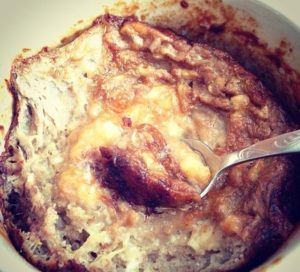

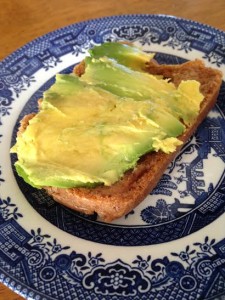
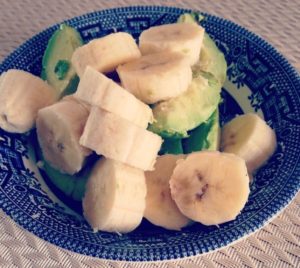
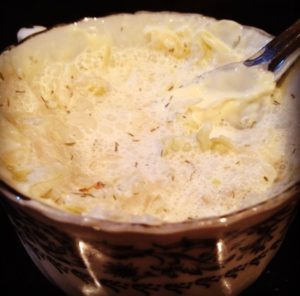
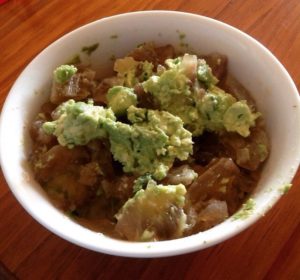
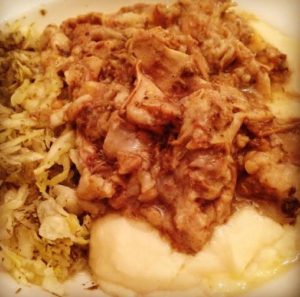
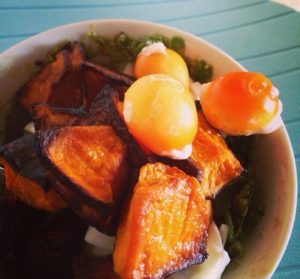
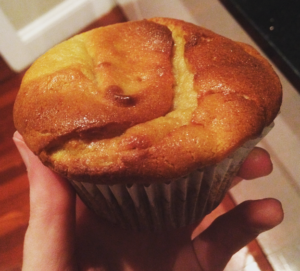
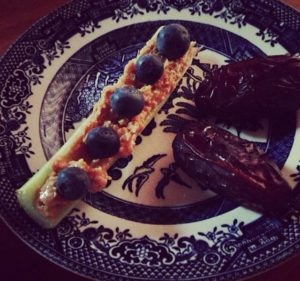
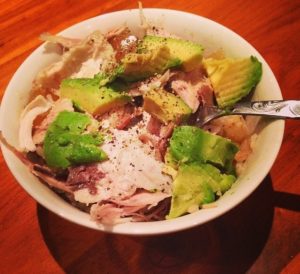
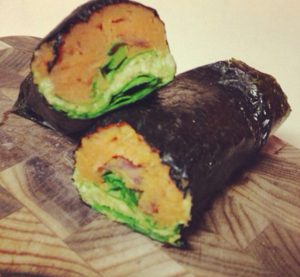

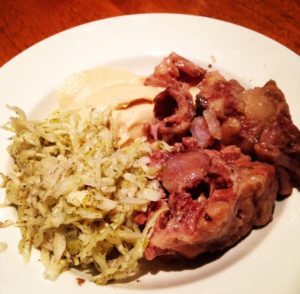
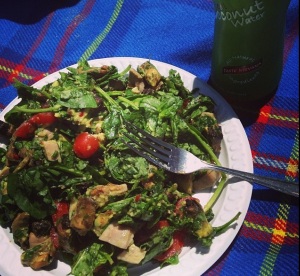

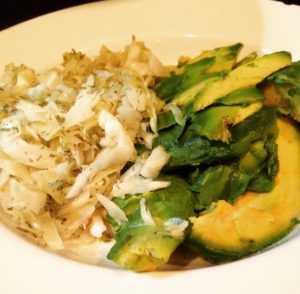


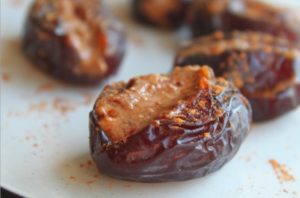
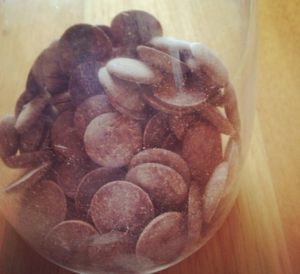
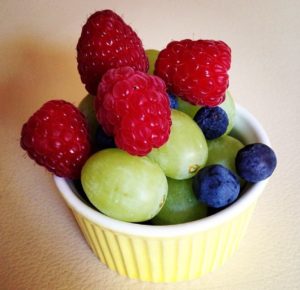
Such a thorough list of ideas and inspiration! Good job Rach 🙂
Looking forward to our ‘GAPS night’ so we can try out a whole heaps of these recipes! Xxx
Thanks darling girl! Can’t wait to have the pleasure of cooking for you xxxxx